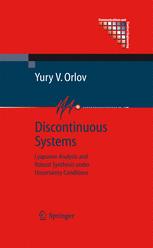

Most ebook files are in PDF format, so you can easily read them using various software such as Foxit Reader or directly on the Google Chrome browser.
Some ebook files are released by publishers in other formats such as .awz, .mobi, .epub, .fb2, etc. You may need to install specific software to read these formats on mobile/PC, such as Calibre.
Please read the tutorial at this link: https://ebookbell.com/faq
We offer FREE conversion to the popular formats you request; however, this may take some time. Therefore, right after payment, please email us, and we will try to provide the service as quickly as possible.
For some exceptional file formats or broken links (if any), please refrain from opening any disputes. Instead, email us first, and we will try to assist within a maximum of 6 hours.
EbookBell Team

0.0
0 reviewsA major problem in control engineering is robust feedback design that stabilizes a nominal plant while also attenuating the influence of parameter variations and external disturbances. This monograph addresses this problem in uncertain discontinuous dynamic systems with special attention to electromechanical systems with hard-to-model nonsmooth phenomena such as friction and backlash. Ignoring these phenomena may severely limit performance so the practical utility of existing smooth control algorithms becomes questionable for many electromechanical applications.
With this motivation, Discontinuous Systems develops nonsmooth stability analysis and discontinuous control synthesis based on novel modeling of discontinuous dynamic systems, operating under uncertain conditions. Although it is primarily a research monograph devoted to the theory of discontinuous dynamic systems, no background in discontinuous systems is required; such systems are introduced in the book at the appropriate conceptual level. Being developed for discontinuous systems, the theory is successfully applied to their subclasses – variable-structure and impulsive systems – as well as to finite- and infinite-dimensional systems such as distributed-parameter and time-delay systems. The presentation concentrates on algorithms rather than on technical implementation although theoretical results are illustrated by electromechanical applications. These specific applications complete the book and, together with the introductory theoretical constituents bring some elements of the tutorial to the text.